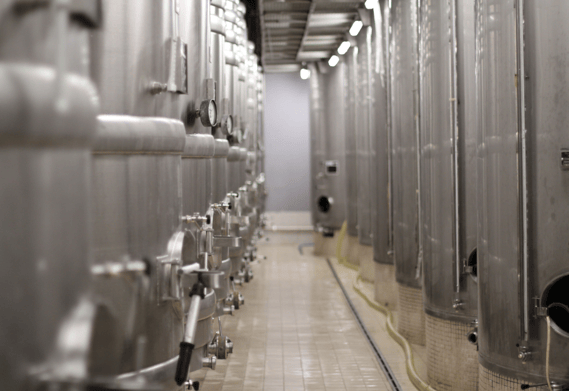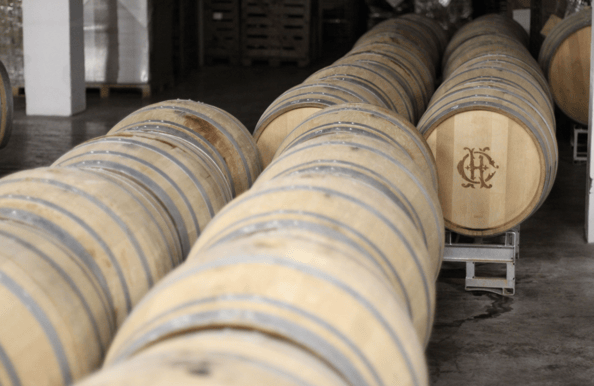Barrels, Cement, and Tanks, Oh My! A Primer on Wine's Most Popular Vinification Vessels

When it comes to making quality wine, vinification choices are just as impactful to the final cuvée as the grape varieties used. In addition to viticultural decisions (including when to harvest), how the fruit is handled in the cellar is extremely influential to a wine’s final outcome. One of the major choices vignerons must make lies in which type of vessel they choose to ferment and age their wines. Material, size, and place of origin of the raw material also play major roles, too! We’re breaking down the wine world’s most common vinification vessels with this comprehensive explainer, here.
Stainless Steel
Stainless steel is one of the most common types of materials used in vinification, particularly in white wine and rosé production. Stainless steel helps preserve freshness and acidity in wines, as well as provides a neutral vinification environment. This neutral fermentation/aging environment means that no external flavors are imparted onto the wine being made. Stainless steel also provides a sealtight environment, unlike oak and cement (which are porous), meaning that no oxygen is able to penetrate into the vessel. This lack of oxygen, as well as the absence of imparted flavors, helps to create fresh and bright final wines.
 📸: Jonathan Poff
📸: Jonathan Poff
Oak
Vinification in oak creates an entirely different environment for fermenting/aging juice. Depending on the type of oak, certain flavors may be imparted onto a wine simply based on its presence in the material. Oak’s porous nature also allows small amounts of oxygen to enter into the vessel, which permits the effects of micro-oxygenation to take place. These effects often include the softening of tannins and acidity in wine.
Whether oak is new or used will also play a major role on its affect on a given wine. New oak barrels tend to impart more prominent flavors of baking spice, vanilla, and other ‘sweet’ notes onto a wine, whereas used (or ‘neutral’) barrels will have less of an effect.
The type of oak that is used also plays a role. The two most common types of oak used in vinification are French and American. French oak barrels tend to be tighter-grained, meaning that the effects of oxygenation are lower. Another type of wood, called Slavonian oak, is also common in winemaking. This type of oak comes from western and southern European countries and is generally used for creating larger format barrels.
With regards to size, the measurements of a given vessel will also affect a wine’s final flavor profile, as this determines how much juice is directly in direct contact with the wood, lees, and other elements. The most common sizes for oak vessels are as follows:
Bordeaux barrels - 225L (59 gallons)
Burgundy barrels - 228L (60 gallons)
Puncheon - 500L (132 gallons)
Demi-muid - 600L (158 gallons)
Foudre/Botti - 1.5K - 12K L (500-3K+ gallons)
*The term barrique originated in Bordeaux and tends to refer to smaller sized oak vessels.
 📸: Jonathan Poff
📸: Jonathan Poff
Cement
Cement is essentially the Goldilocks of vinification vessels, as it provides a happy medium between the ‘extremes’ of oak and steel. Many winemakers choose to vinify their wines in cement because it has a similar porosity to oak, therefore allows micro-oxygenation to take place. However, cement is essentially flavorless, therefore imparts no additional flavors to the wine, similar to steel. For winemakers looking to soften acidity and tannins in wine without imparting the potential flavors of oak onto the juice, cement is the way to go.
Cement also comes in a variety of shapes and sizes. Most commonly, cement vessels are referred to as vats. However, egg-shaped cement vessels have also become popular. The oblong shape of egg-shaped vats allows for a consistent flow of gravity within the vessel, meaning that particles within the fermenting/aging wine are constantly in motion. Clay pots and egg-shaped vats are also common. Like cement, clay also has a porous nature but neutral flavor.
*
It’s important to note that no material or size vessel is ‘better’ than another in the world of vinification. These choices are all simply based on winemakers’ preferences and how they want their final wines to taste. Cheers!


